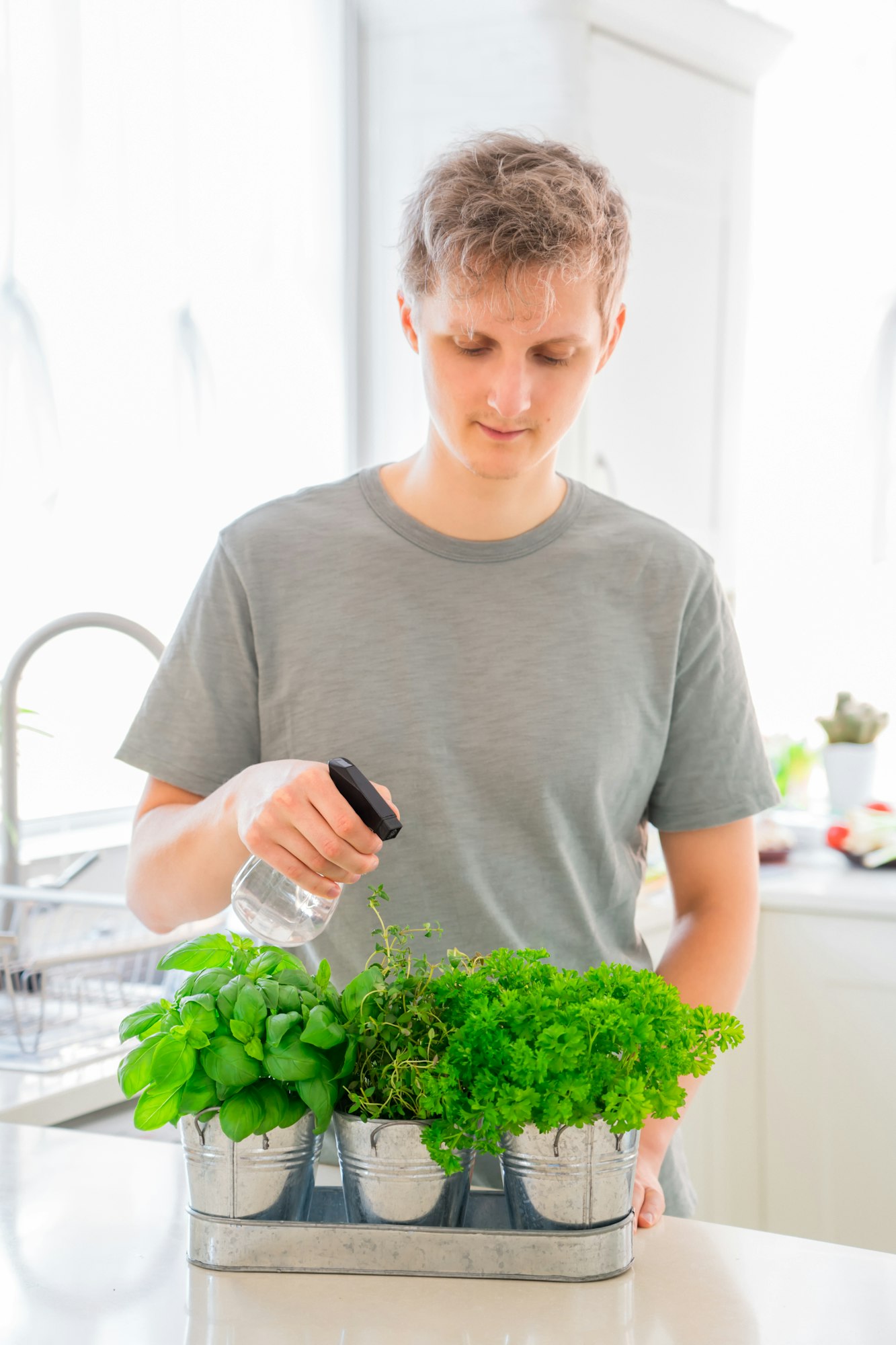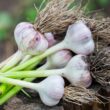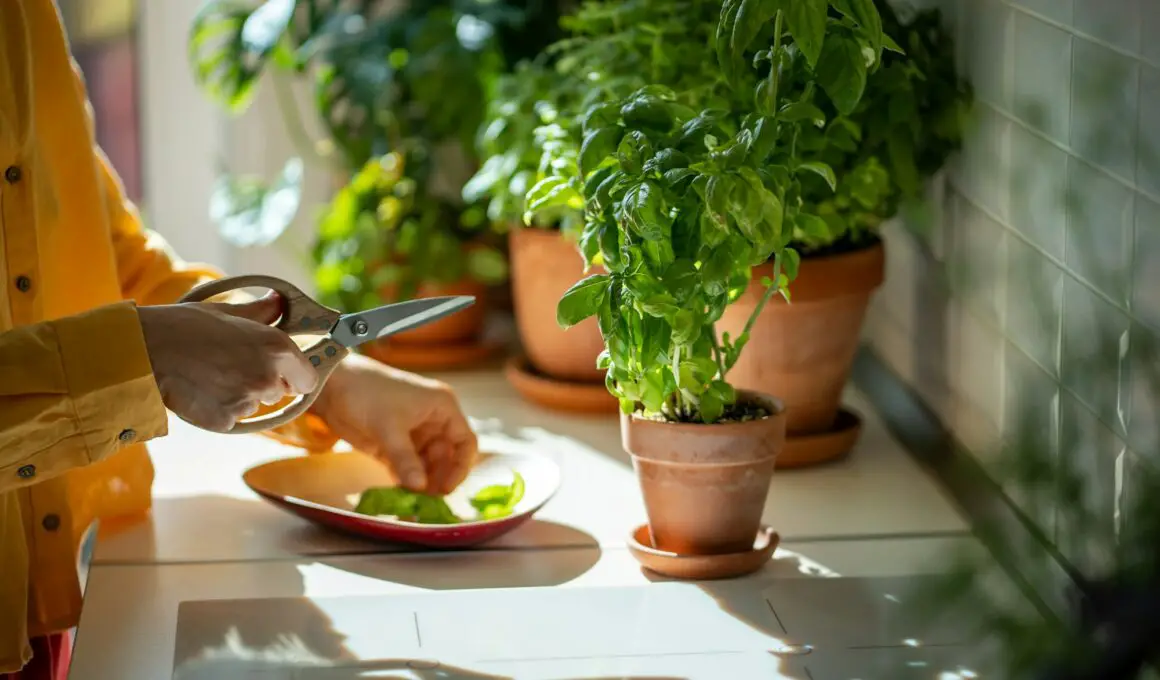In This Article Show
Growing your basil is not only simple but immensely rewarding. Whether you’re looking to enhance your cooking with fresh herbs or add a touch of green to your living space, starting with basil is a great choice. In this guide, I’ll walk you through five straightforward steps to cultivate lush, aromatic basil right from the comfort of your home. From selecting the right seeds to harvesting your first leaves, let’s get your green thumb working as we explore how to successfully grow basil and enjoy its fresh flavors all season long.
How to Grow Basil At Home
1. Choosing the Right Basil Variety

Choosing the right basil variety is crucial to ensure your gardening success and meet your culinary or aromatic expectations. Basil comes in several delightful varieties, each with its unique flavor profile and growth habits, making it an exciting first step in your herb gardening journey.
- Sweet Basil is perhaps the most popular, known for its bright, fresh flavor, which is a staple in Italian dishes like pesto and caprese salads. It thrives in warm climates and needs plenty of sunlight.
- Thai Basil, with its robust licorice-like flavor, is a fantastic choice for those who love Asian cuisine. It has a slightly tougher texture and can handle a bit more heat than Sweet Basil, making it ideal for stir-fries and soups.
- Purple Basil not only adds a pop of color to your garden but also brings a milder taste with hints of clove. Its vibrant leaves make it a decorative as well as a culinary delight, excellent for adding color to salads and garnishes.
When selecting a basil variety, consider your cooking preferences and the climate you live in. Most basil varieties prefer warm, sunny conditions, but some like Purple Basil can tolerate slightly cooler temperatures. This proactive approach will help you grow a robust basil plant that brings flavor and beauty to your home.
2. Sourcing Your Supplies

Sourcing the right supplies is a fundamental step in starting your basil garden. Here’s a straightforward list of basic gardening supplies you’ll need:
1. Basil Seeds or Starter Plants
Choose from a variety of basil seeds or opt for starter plants if you want a head start. Organic seeds are preferable as they guarantee your plants are free from synthetic additives and genetically modified organisms.
Get Gardening For Beginners
Our new EBOOK shows newcomers and green thumbs alike a step by step guide to growing the garden of their dreams.
2. Pots or Containers
Basil grows well in pots or other containers, making it ideal for balcony gardens or indoor setups. Ensure your pots have adequate drainage holes to prevent waterlogging, which can harm the plant’s roots.
3. High-Quality Potting Soil
Opt for a high-quality potting mix designed for container gardening. This type of soil ensures good aeration and proper drainage. Organic potting soil, rich in nutrients, can further enhance plant growth and health.
4. Watering Can
A watering can with a long spout helps you water your basil gently and accurately, minimizing disturbance to the soil and ensuring even moisture distribution.
5. Fertilizer
Get Gardening For Beginners
Our new EBOOK shows newcomers and green thumbs alike a step by step guide to growing the garden of their dreams.
Choose an organic fertilizer that is suitable for edible plants. A balanced liquid fertilizer can be used once a month to provide additional nutrients, especially if your plants are growing in containers.
6. Labels or Markers
If you’re planting multiple varieties, it’s helpful to label your pots to keep track of which type is which. This can be particularly useful when caring for and harvesting the plants.
Starting with the best supplies not only enriches the soil and fosters healthy growth but also makes the entire gardening experience more enjoyable and successful. Invest in quality materials from the start, and you’ll see the difference in the vitality and yield of your basil plants.
3. Planting Your Basil

Planting your basil correctly sets the stage for healthy growth and abundant harvests. Whether you’re starting from seeds or using starter plants, following these step-by-step instructions will help ensure your success:
Planting Basil Seeds
- Timing: Basil is sensitive to cold, so the best time to plant seeds is after the last frost in spring when the soil has warmed up. In tropical or consistently warm climates, basil can be planted year-round.
- Soil Preparation: Fill your pots or containers with a high-quality potting mix, leaving about an inch of space at the top. Ensure the soil is loose and free of clumps to facilitate easy root growth.
- Seed Placement: Sprinkle the basil seeds lightly across the soil surface. Then, gently press them into the soil to a depth of about 1/4 inch. Cover the seeds with a thin layer of soil. Basil seeds need some light to germinate, so avoid burying them too deeply.
- Watering: Moisten the soil gently with a watering can, ensuring it’s evenly damp but not waterlogged. Continue to keep the soil moist but not overly wet as the seeds germinate.
- Germination: Place the pots in a warm, bright spot but out of direct sunlight until seeds germinate. Basil seeds typically sprout within 5 to 10 days.
Planting Starter Plants
- Pot Selection: Choose a pot that is at least 8 inches in diameter for each basil plant. This size allows ample room for root growth.
- Transplanting: Carefully remove the basil plant from its nursery container, trying not to disturb the roots too much. Place the plant in the new pot, filling it with potting soil. The top of the root ball should be just below the surface of the soil.
- Spacing: If planting multiple basil plants in one large container, space them about 12 to 16 inches apart to give each plant enough room to grow.
Importance of Spacing and Container Size
Proper spacing and container size are crucial for healthy basil growth. Overcrowded plants compete for nutrients and light, which can lead to poor growth and development. Adequate space also helps improve air circulation around the plants, reducing the risk of fungal diseases.
By following these guidelines, you’ll set a strong foundation for your basil plants, encouraging vigorous growth and a plentiful yield of aromatic leaves.
4. Caring for Your Basil Plants

Caring for your basil plants involves a few key practices that ensure their health and productivity. Here’s how to provide the best care for your basil:
1. Sunlight Requirements
Basil thrives in full sun, requiring at least 6 to 8 hours of direct sunlight per day. If you’re growing basil indoors, place it near a south-facing window or use a grow light to supplement the natural light. Lack of sufficient light can lead to leggy plants with fewer leaves.
2. Watering Frequency
Basil prefers soil that is consistently moist but not waterlogged. Water your basil when the top inch of the soil feels dry to the touch. Early morning is the best time to water, allowing the leaves and soil to dry out over the day, which helps prevent fungal diseases. In hot weather, basil may need to be watered daily, especially if it’s in containers.
3. Soil pH and Drainage
Basil grows best in soil with a pH between 6.0 and 7.0, which is slightly acidic to neutral. You can easily test the soil pH with a home test kit available at garden centers. Proper drainage is critical to prevent root rot; therefore, ensure your containers have drainage holes and use a well-draining potting mix. Avoid letting the pots sit in saucers filled with water.
4. Fertilizing
Feed your basil plants with a balanced, water-soluble fertilizer every 4 to 6 weeks during the growing season. Since basil is a fast grower, regular feeding helps maintain robust growth and rich, flavorful leaves. Organic options like fish emulsion or compost tea are excellent for providing nutrients without overloading the plant with chemicals.
5. Regular Maintenance
Pinch off the tips of the basil as it grows to encourage bushier plants and prevent early flowering. If flowers do appear, remove them promptly to direct the plant’s energy into leaf growth. Regular harvesting also stimulates new growth and can be done once the plant reaches about 6 inches in height.
Check your basil plants regularly for signs of pests or diseases. Common issues include aphids and fungal infections like powdery mildew. Natural remedies like neem oil or a gentle soap solution can help manage minor pest problems.
5. Harvesting and Using Your Basil

Harvesting your home-grown basil is one of the most enjoyable aspects of gardening, allowing you to enjoy the fruits of your labor in a variety of delicious ways. Here’s how to properly harvest and use your basil to maximize its freshness and flavor:
When and How to Harvest Basil
- Timing: Begin harvesting your basil when the plant has at least six leaves, which typically happens around 6 to 8 weeks after planting. This ensures that the plant is mature enough to regenerate after leaves are picked.
- Method: To harvest, use clean scissors or your fingers to snip off leaves or entire stems just above a pair of leaves. This method encourages the plant to branch from the cut point, becoming bushier and more productive. Aim to harvest in the morning, when the plant’s essential oils are at their peak, for the best flavor.
Keeping Your Basil Plant Productive
- Regular Pruning: Regularly pruning your basil will prevent it from flowering, which can cause the leaves to become bitter. Always prune above a leaf pair, and don’t be afraid to cut back up to one-third of the plant at a time. This might seem drastic, but basil is vigorous and will regrow quickly.
- Maintenance Tips: Keep an eye on the plant’s health and remove any yellow or damaged leaves to keep it tidy and disease-free. Regularly check for pests like aphids or spider mites, especially if grown indoors.
Simple Recipes or Uses for Home-Grown Basil
- Fresh Uses: Fresh basil leaves are a delightful addition to salads, sandwiches, and wraps. They bring a vibrant flavor to fresh pasta dishes or can be layered in mozzarella and tomato salads for a classic Caprese.
- Cooking: Basil is essential in Italian cooking, particularly in pestos and sauces. Blend fresh basil leaves with garlic, pine nuts, Parmesan cheese, and olive oil for a homemade pesto that’s far superior to store-bought versions.
- Drinks and Desserts: Infuse basil in lemonades, cocktails, or teas for a refreshing twist. Basil also pairs wonderfully with fruits like strawberries and peaches in desserts.
Storing Fresh Basil
To store fresh basil, place the stems in a glass of water like a bouquet and cover the leaves loosely with a plastic bag. Keep them on the countertop if using soon, or store in the refrigerator for longer freshness.
By following these harvesting and usage tips, you’ll ensure that your basil remains productive and vibrant throughout the season, enhancing your meals and your gardening experience with its fresh, aromatic flavor.










